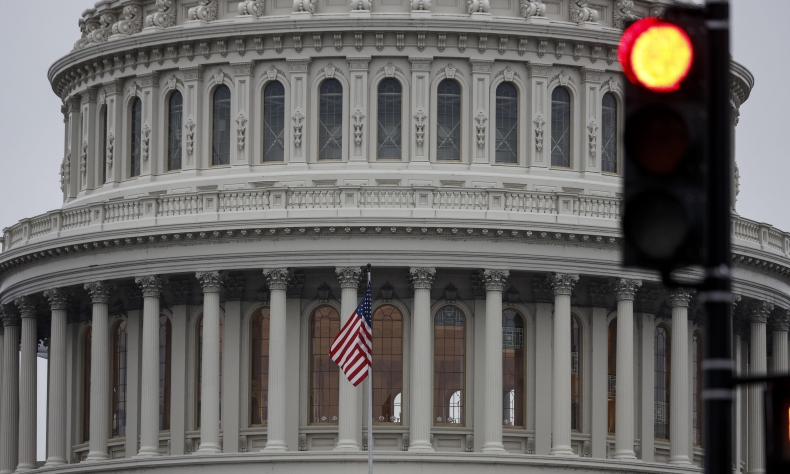American Hegemony Is Propped Up by Never-Ending Debt

The U.S. is pursuing financially unstable policies to forcibly invest in a hegemonic position, but the world is changing and may not accept this forever.
Two weeks ago, independent credit Agency Fitch downgraded the creditworthiness score of the United States from AAA to AA+, citing what it called a “steady deterioration” of the country’s governance. The Biden administration dismissed these reports and attempted to blame the company for various oversights. However, only months prior did the White House, in conjunction with the Senate, secure an agreement to raise the U.S.’s “debt ceiling” and offset the issue for two more years until 2025, thus allowing the national debt of the country, which now stands at $31 trillion, to continue growing.
The United States fuels its entire system and global military machine on the back of an ever-expanding notion of debt. In the 2022 financial year alone, the U.S. government effectively spent $1.4 trillion more than it actually had, therefore borrowing money to do so. The U.S. is able to continually borrow money as it occupies the center of the global financial system through the hegemony of the dollar. In other words, because the rest of the world trades in, lends in, and therefore invests in, USD, the U.S. Federal Reserve believes that it has unlimited resources and therefore can live off debt forever.
It is precisely this dominance over global financial and commodity markets that has allowed the United States to apply the dollar as a political weapon at its own accord and as a means of long-arm jurisdiction. Through USD dominance, the U.S. is able to blacklist certain firms, individuals, and even entire countries and cut them off from global capital markets. However, these privileges will only go so far until certain countries and institutions begin to push back against them. The U.S.’s overindulgence in debt has damaged its financial credibility.
Following the aftermath of the COVID pandemic, the U.S. injected trillions worth of stimulus into its economy in order to forcibly restart it. While this worked, it nonetheless then suffered from surging inflation. This then led the Federal Reserve to raise interest rates multiple times, which of course increases the cost of borrowing and lending, making debt more expensive and less sustainable. This has led the national debt to balloon and also produced debt crises around the world amid shockwaves through the financial system and the inflation in the value of the dollar. It isn’t a sustainable path, which is why Fitch downgraded the U.S.’s credit rating.

Now, as the geopolitical climate of the world changes, there is a growing movement by other countries to offset the dollar for both economic and political reasons; economically, because the dollar places them at a disadvantage in managing their own finances and maintaining stability, and politically, because it also represents a violation of national sovereignty and a tool of coercion that can be used at any time. The crisis in Ukraine subsequently set off a large wave of de-dollarization as countries witnessed the impact of the massive sanctions the West placed on Russia and the subsequent seizure of national assets by various parties. Although it is not easy to create a non-dollar financial system, there is nonetheless an incentive to do so.
Thus, while efforts to change the status quo may appear negligible in the short term, in the long run, the U.S.’s strategy of relying on the dollar to pursue unlimited spending will eventually catch up with its economy. For now, its position allows it to take the national debt and the budget deficit for granted. However, this is based on the assumption that the economy and national tax revenue, as well as the buoyancy of the dollar, will remain in tandem with it. U.S. military spending, for one, continues to grow year upon year, and the appetite for feeding the military-industrial complex is never-ending as Washington seeks to confront its rivals. In 2023, that budget was $877 billion. But what happens if a day comes when that debt cannot be ignored? And the dollar has lost clout? Or, of course, more simply, what happens when the economy cannot catch up with spending?
The U.S. is pursuing financially unstable policies to forcibly invest in a hegemonic position, but the world is changing and may not accept this forever. One day, this will certainly spell trouble for them, which is why organizations such as Finch are already starting to lose confidence.
 Facebook
Facebook
 Twitter
Twitter
 Linkedin
Linkedin
 Google +
Google +







